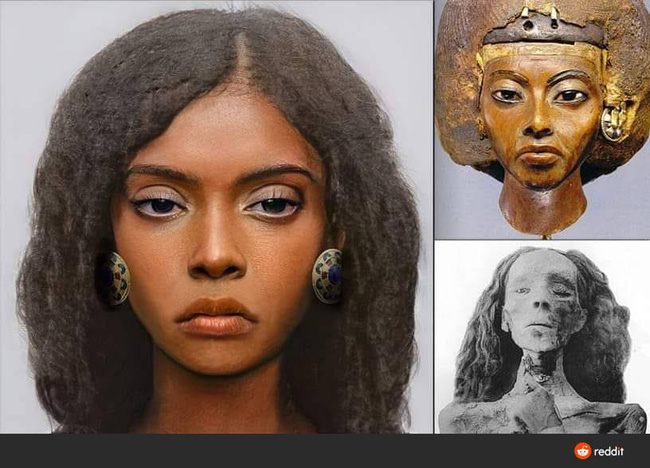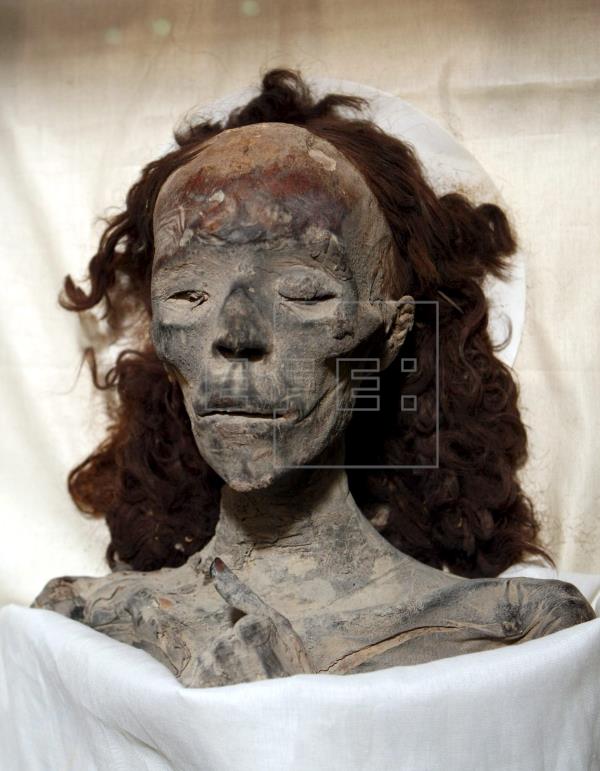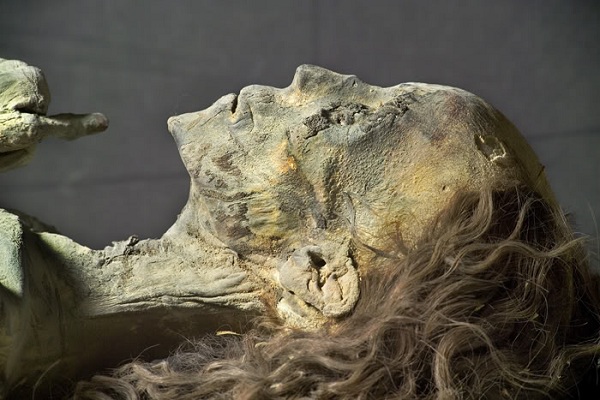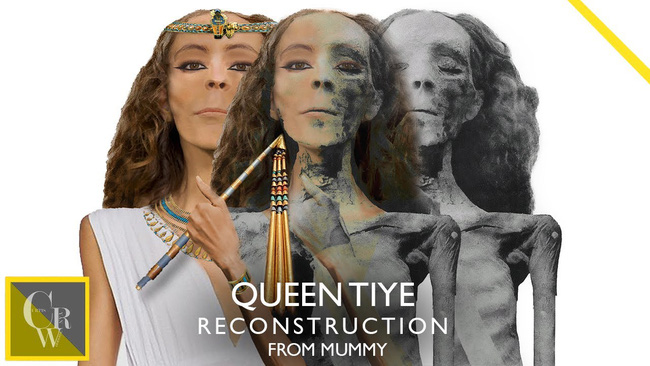When seeing the recreated image, many netizens couldn’t help but marvel and be amazed by the impressive beauty of that woman.

Ancient history has always been a “mysterious treasure trove” that attracts the attention of numerous scientists, archaeologists, and historians. Sometimes, just a piece of bone or some ancient inscriptions on a stone slab are enough to help people discover something about the lives of our human ancestors, about those illustrious figures of the past.

Thanks to the remarkable advancements in science and technology, from the lifeless mummies preserved for thousands of years, scientists have been able to reconstruct the faces of many famous historical figures.
In 2020, scientists used available images combined with historical information and evidence about the facial features of the renowned Egyptian queen – Queen Tiye (1398 BCE – 1338 BCE), wife of King Amenhotep III, mother of King Akhenaten, and grandmother of King Tutankhamun – to recreate her face as it might have looked during her lifetime.

Recreating the visage of the millennia-old noblewoman left netizens astounded by the ancient woman’s beauty. However, there’s still a debated question: was Queen Tiye’s skin truly dark or fair? Nevertheless, regardless of her skin tone, the facial features of this woman leave a lasting impression.
Of course, this is only a reconstructed image based on the speculation of a group of scientists. Does Queen Tiye actually possess such beauty as rumored?
In 2011, experts studying her mummy announced the presence of a flat grain of rice-sized pimple on Queen Tiye’s forehead. It grew between her eyes, slightly affecting the aesthetic appeal of her face.

While visiting the Cairo Museum, Spanish Egyptologist Mercedes González noticed an unusual mark on Queen Tiye’s forehead. “I took a high-resolution photo of Queen Tiye’s face, and there seems to be a pimple,” Mercedes González said.
The cause of this pimple, or benign tumor, might be the Papilloma virus (HPV), a type of virus commonly found on the skin. However, this skin condition caused by this virus is rare on ancient Egyptian mummies, making this discovery unique.

At the University of Zurich (Switzerland), leading the mummy project, Frank Rühli, stated that the “foreign object” on Queen Tiye’s forehead could be a pimple or a fibroma. Researchers are eager to conduct further DNA tests. However, the opinion of Egyptian expert Salima Ikram contradicts this. He suggests that this mark may have formed after mummification.
Her mummy was discovered through DNA analysis in February 2010. She was the daughter of Yuya and Thuya and became the wife of Pharaoh Amenhotep III, the mother of Pharaoh Akhenaten.

Queen Tiye is one of the most mysterious women in Egyptian history. She always received utmost affection from her husband, Pharaoh Amenhotep III. The king once described his wife as the most elegant and sweetest woman in the world, captivating both the court and the people with her beauty.
Throughout the 38-year reign of Pharaoh Amenhotep III, she was also the most influential woman. In surviving sculptures, Queen Tiye and Pharaoh Amenhotep III are depicted seated equally, reflecting the love and respect of Pharaoh Amenhotep III for his wife.
News
Stephen Curry offered Ayesha Curry a single dish on their first date that made Ayesha agree to be his wife.
With Ayesha Curry, go down memory lane via food, of course! Curry tells people in this week’s issue that she is constantly creating new recipes, whether they are for her family’s dinners or her new cookbook, The Full Plate. She…
Stephen Curry: From an underrated boy to an icon of world basketball
Stephen Curry, the Golden State Warriors’ superstar, has had an extraordinary journey in the NBA, going from an unknown player to solidifying his place as the Greatest of All Time (GOAT). His rise to greatness is a testament to his…
Rick Ross’ strange and eccentric hobbies make his relatives become distant.
Rick Ross, the renowned rapper and entrepreneur, has a rather unconventional hobby that sets him apart from the crowd: he keeps wild animals as pets. While many celebrities opt for more traditional pets like dogs or cats, Ross has embraced…
Lil Wayne revealed the reason why he always loves and pampers Kameron the most compared to his other children.
The bond between a parent and child is one of the most profound and enduring relationships in life. For Lil Wayne, the renowned rapper and father of four, his love for his youngest son, Kameron, runs deep. As Kameron grows…
Lil Wayne reveals his songwriting formula for creating explosive and successful rap songs.
Onе of thе most succеssful rаppеrs of thе lаst two dеcаdеs is Lil Wаynе. Sincе rеlеаsing his first аlbum аt 17, hе hаs sold oᴠеr 120 million copiеs worldwidе, mаking him onе of thе most succеssful аrtists in hip hop…
Novak Djokovic dressed as Snoop Dogg – passionately singing with Eminem at a cozy party, making fans excited.
Novak Djokovic made an impression on his rivals in Monte Carlo after his performance at the player party. The world No. 1 dressed up as Snoop Dogg and danced to one of his songs before rapping Eminem. All of it…
End of content
No more pages to load











